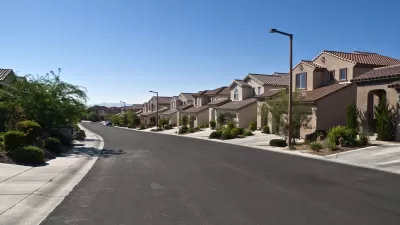A new global platform will help the world identify and encourage opportunities for more proximity in the built environment—development patterns that can help reduce sources of greenhouse gas emissions and other forms of pollution if built well.

A new platform, the Global Observatory of Sustainable Proximities, was launched during the Second United Nations Habitat Assembly earlier this week. The platform “will serve as a go-to knowledge and capacity building platform collecting information about local initiatives while supporting and promoting urban proximities at a global scale,” according to a press release announcing the launch.
“Together, the Observatory partners will develop a globally applicable concept based on proximity, official measures and indicators, a global centre for knowledge sharing and capacity building, and a global network to support cities in implementation,” explains the press release.
In the ensuing days since the press release was published, the East Coast of the United States was smothered by wildfire smoke drifting down from ongoing wildfires to the north in Canada, sending a palpable signal of the terrible damages of climate change to a heavily populated and relatively wealthy region. The development proximity sought by the new platform has been repeatedly shown to reduce causes of greenhouse gas emissions, and the United Nations has repeatedly called on the United States to transform its land use and transportation practices to help slow rising greenhouse gas emissions around the world. More proximity in development patterns would also prevent sprawl on the wildland-urban interface, which introduces various environmental risks and provides fuel for wildfires.
The platform was launched by four founding partners: the Entrepreneurship, Technology and Innovation Chair of the IAE Paris Sorbonne Business School (Chaire ETI), C40 Cities, United Cities and Local Governments (UCLG) and the United Nations Human Settlements Programme (UN-Habitat).
FULL STORY: Global platform launched to support ‘proximity’ in urban planning

Planetizen Federal Action Tracker
A weekly monitor of how Trump’s orders and actions are impacting planners and planning in America.

Congressman Proposes Bill to Rename DC Metro “Trump Train”
The Make Autorail Great Again Act would withhold federal funding to the system until the Washington Metropolitan Area Transit Authority (WMATA), rebrands as the Washington Metropolitan Authority for Greater Access (WMAGA).

The Simple Legislative Tool Transforming Vacant Downtowns
In California, Michigan and Georgia, an easy win is bringing dollars — and delight — back to city centers.

The Small South Asian Republic Going all in on EVs
Thanks to one simple policy change less than five years ago, 65% of new cars in this Himalayan country are now electric.

DC Backpedals on Bike Lane Protection, Swaps Barriers for Paint
Citing aesthetic concerns, the city is removing the concrete barriers and flexposts that once separated Arizona Avenue cyclists from motor vehicles.

In These Cities, Most New Housing is Under 441 Square Feet
With loosened restrictions on “micro-housing,” tiny units now make up as much as 66% of newly constructed housing.
Urban Design for Planners 1: Software Tools
This six-course series explores essential urban design concepts using open source software and equips planners with the tools they need to participate fully in the urban design process.
Planning for Universal Design
Learn the tools for implementing Universal Design in planning regulations.
Smith Gee Studio
City of Charlotte
City of Camden Redevelopment Agency
City of Astoria
Transportation Research & Education Center (TREC) at Portland State University
US High Speed Rail Association
City of Camden Redevelopment Agency
Municipality of Princeton (NJ)





























